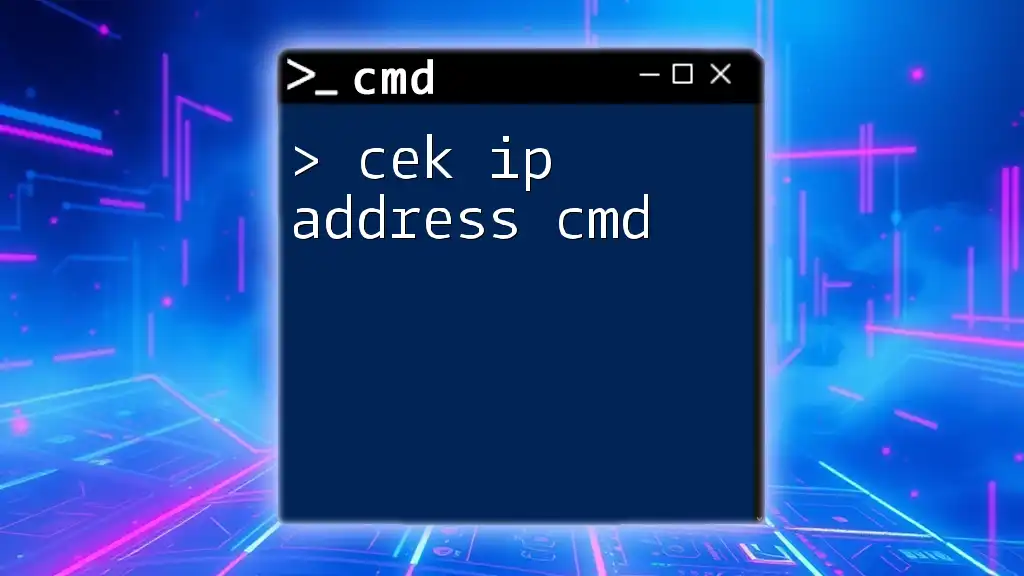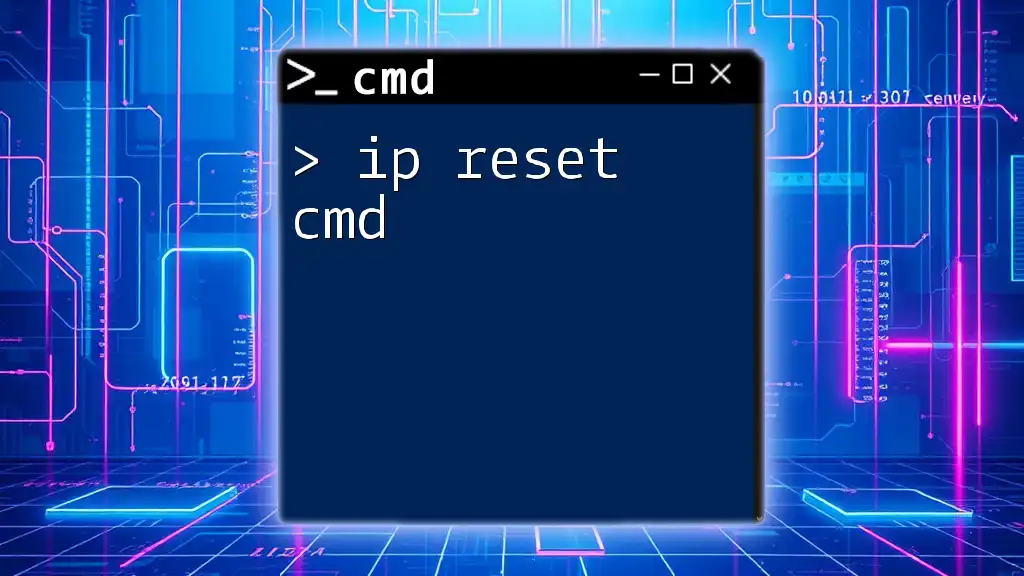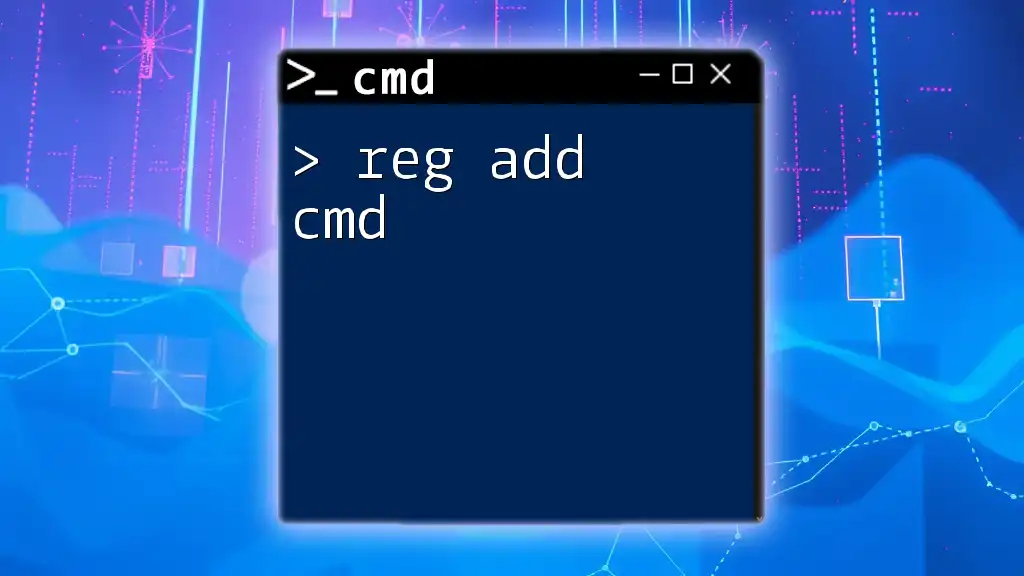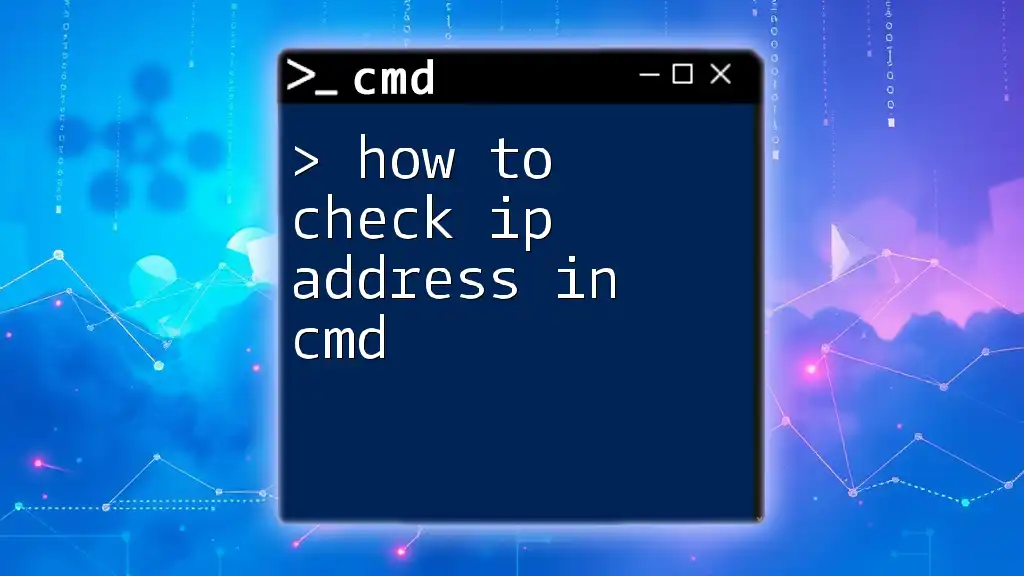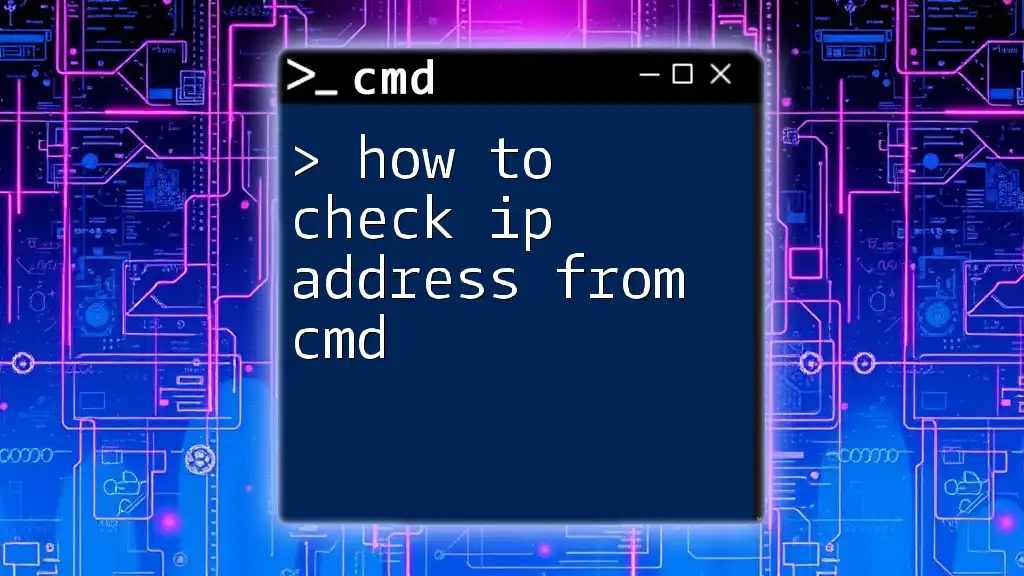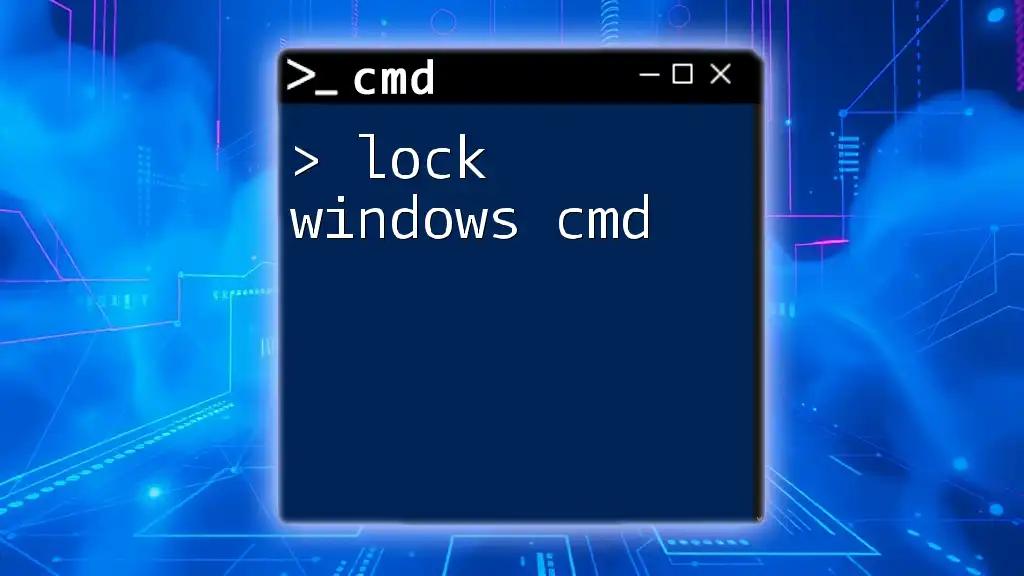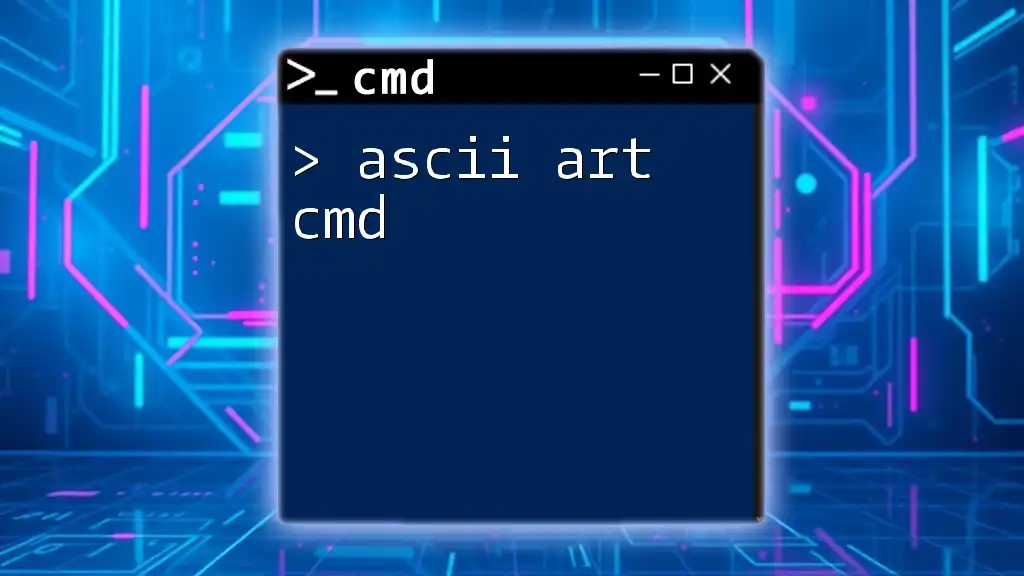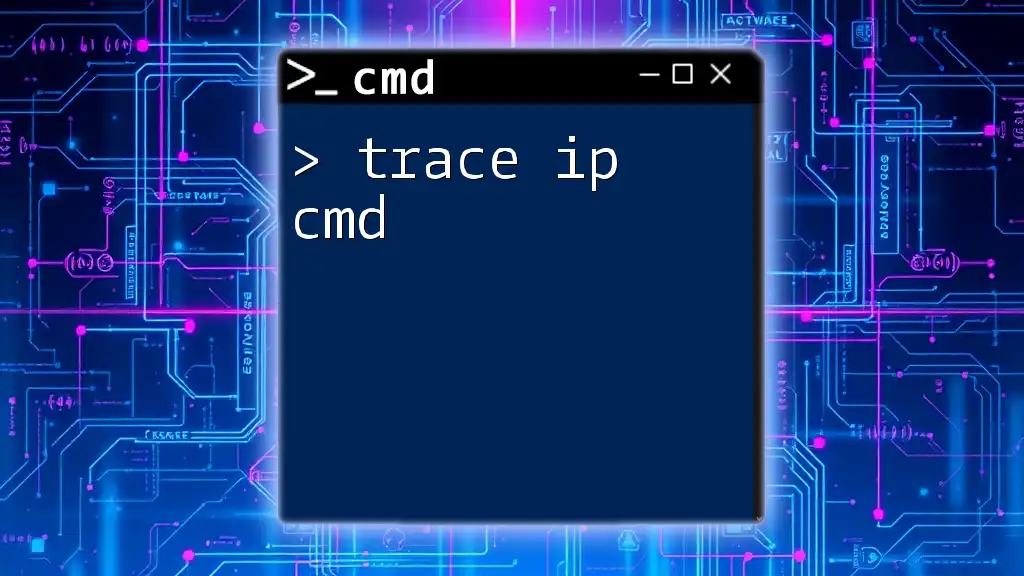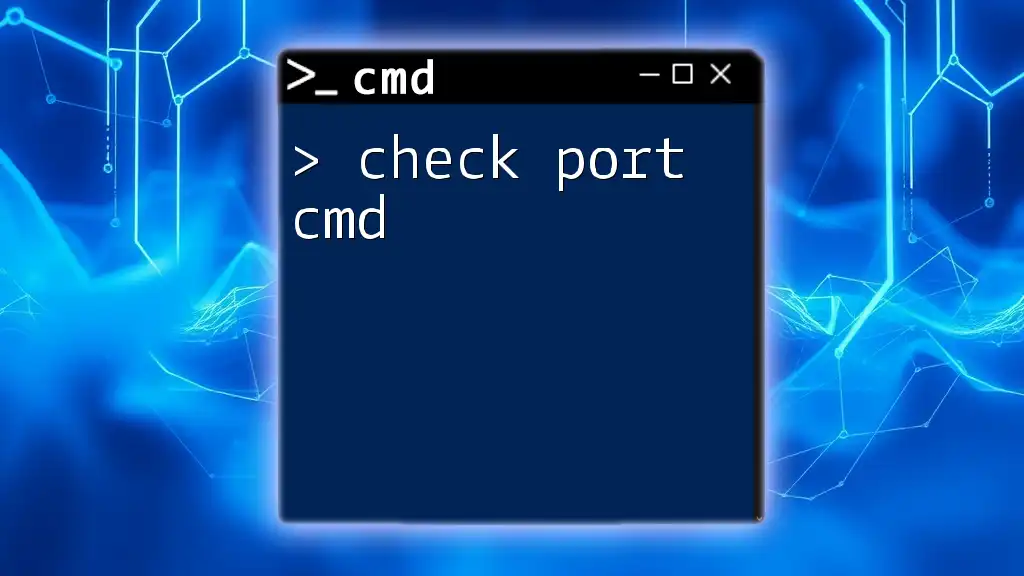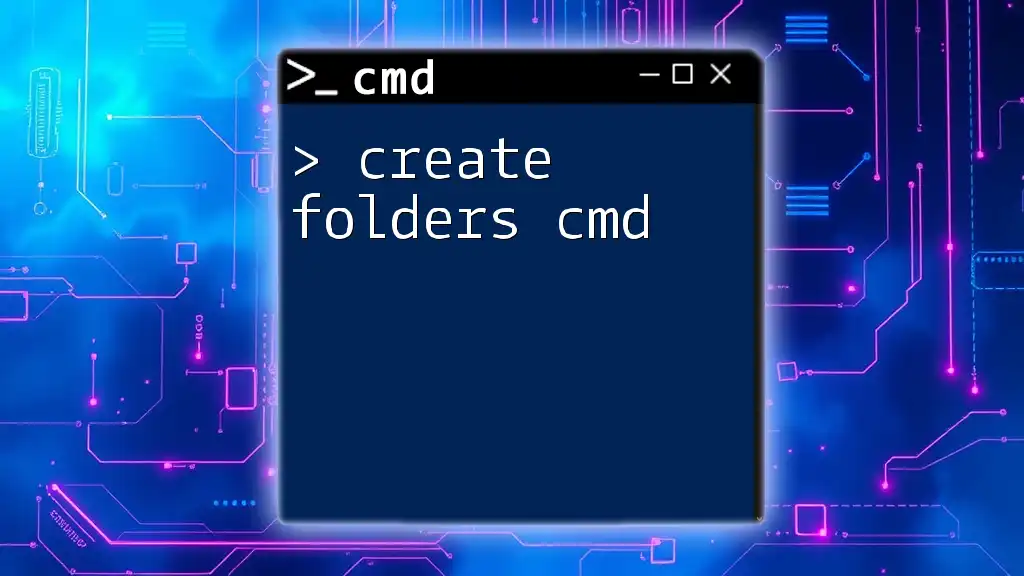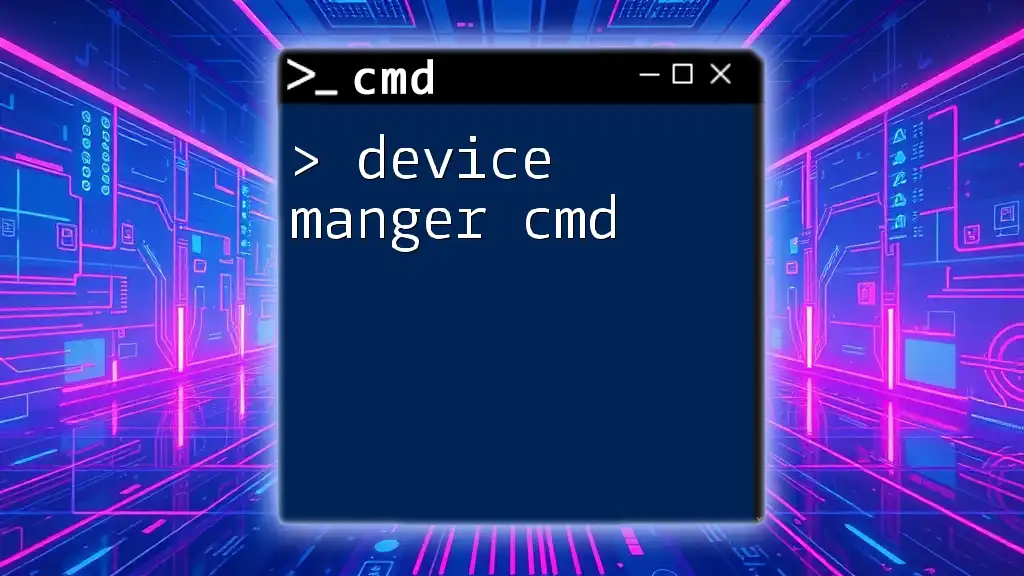To check your IP address using the command prompt, you can use the following command:
ipconfig
Understanding IP Addresses
What is an IP Address?
An IP address (Internet Protocol address) is a unique identifier assigned to each device connected to a network using the Internet Protocol for communication. It serves two main functions: identifying the host or network interface and providing the location of the device in the network.
There are two primary versions of IP addresses you should be aware of:
- IPv4: This is the most widely used version, consisting of four numbers separated by periods (e.g., 192.168.0.1). Each number can range from 0 to 255.
- IPv6: Introduced to address the limitations of IPv4, IPv6 consists of eight groups of hexadecimal numbers, offering a significantly larger address space.
Key Terms:
- Public IP: This is the address assigned to your network by your Internet Service Provider (ISP) that can be accessed over the internet.
- Private IP: These are addresses used within a private network and are not routable on the internet.
- Static IP: An IP address that doesn't change; it remains constant over time.
- Dynamic IP: An IP address assigned by a DHCP server that can change periodically.
Why You Might Need to Check Your IP Address
There are several reasons why knowing your IP address is essential:
- Troubleshooting Network Issues: If you're experiencing connectivity problems, checking your IP configuration can be a crucial step in diagnosing the issue.
- Configuring Routing and Security Settings: Tasks like setting up firewalls and routers often require you to know your current IP configuration.
- Networking for Gaming or Remote Work: Many online games and remote work applications may require specific configurations that depend on your IP address.
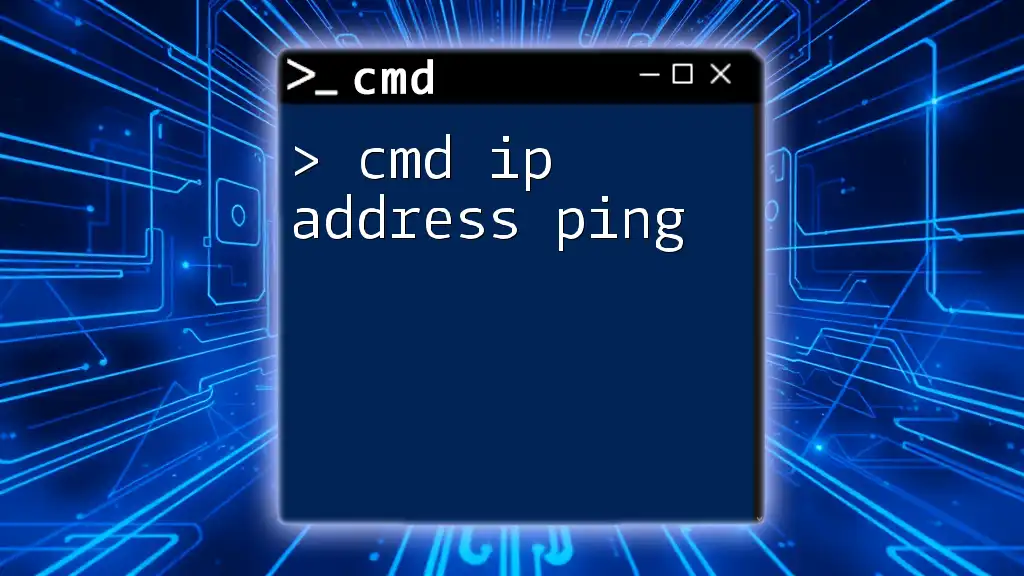
Getting Started with CMD
What is Command Prompt (CMD)?
Command Prompt, often referred to as CMD, is a command-line interface in Windows that allows you to execute commands and perform tasks without a graphical user interface. It is particularly useful for users who need to carry out advanced tasks, such as networking and file management.
To open CMD, you can employ several methods:
- Search for "cmd" in the Start menu.
- Use the Run dialog box by pressing Windows + R and typing `cmd`.
- Right-click on the Start button and select Windows Terminal or Command Prompt from the context menu.
Basic CMD Commands Useful for Networking
Familiarizing yourself with several fundamental commands can enhance your ability to navigate networking tasks:
- `ipconfig`: Displays the current IP configuration, including the IP addresses, subnet masks, and default gateways for all network interfaces.
- `ping`: Tests connectivity to a specified IP address or hostname.
- `tracert`: Traces the path taken by packets to reach a specific destination, helping to identify where delays occur in a network.
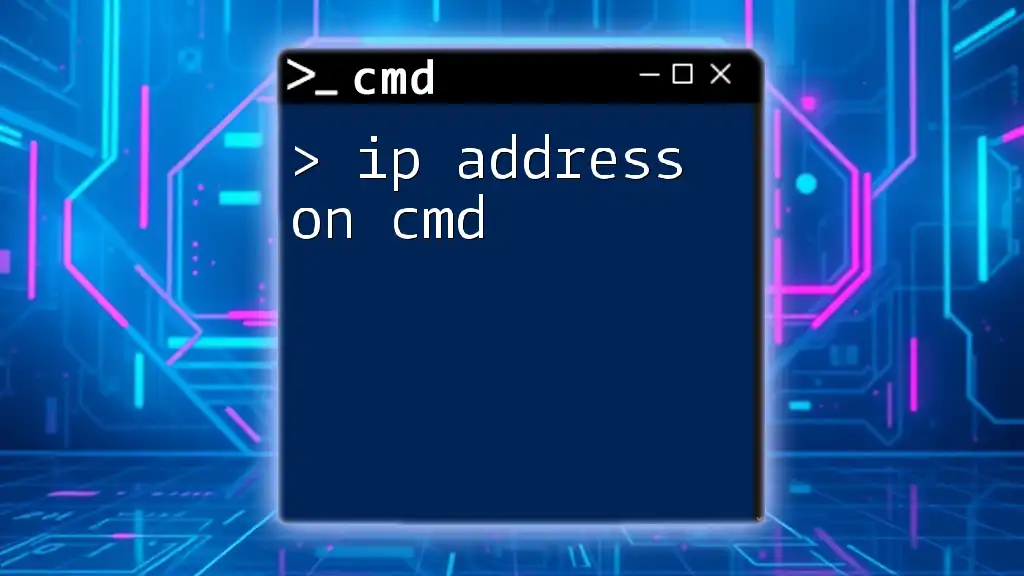
How to Check Your IP Address Using CMD
Step-by-Step Guide to Checking Your IP Address
Open CMD: Start by launching the Command Prompt using one of the methods described above.
Execute the Command: Type the command:
ipconfig
This command will provide you with your device's IP configuration.
Understanding the Output: After you execute the command, CMD will display various network details. Here's how to interpret the important parts of the output:
- IPv4 Address: This is the unique address assigned to your device within your local network, typically formatted like `192.168.1.10`.
- Subnet Mask: This defines the range of IP addresses that can be reached within your network. For instance, a common subnet mask is `255.255.255.0`.
- Default Gateway: This is the IP address of your router, which acts as the access point to the internet.
Example Output:
Ethernet adapter Local Area Connection:
Connection-specific DNS Suffix . :
IPv4 Address. . . . . . . . . . . . : 192.168.1.10
Subnet Mask . . . . . . . . . . . . : 255.255.255.0
Default Gateway . . . . . . . . . . . : 192.168.1.1
Checking Your Public IP Address
To find your public IP address using CMD, you can utilize the `nslookup` command combined with an external DNS resolver. Use the following command:
nslookup myip.opendns.com resolver1.opendns.com
This command queries the OpenDNS service to return your public IP address.
Other Useful Commands for Networking
- Using the `ping` Command: The `ping` command helps ensure that your device can communicate with another device or server. For example:
ping google.com
If successful, you'll receive a reply indicating the time it took to transmit packets back and forth.
- Using the `tracert` Command: This command is valuable for determining the route that packets take to a specific server. By typing:
tracert google.com
you'll see the path your data takes, including the time it takes to traverse each hop.
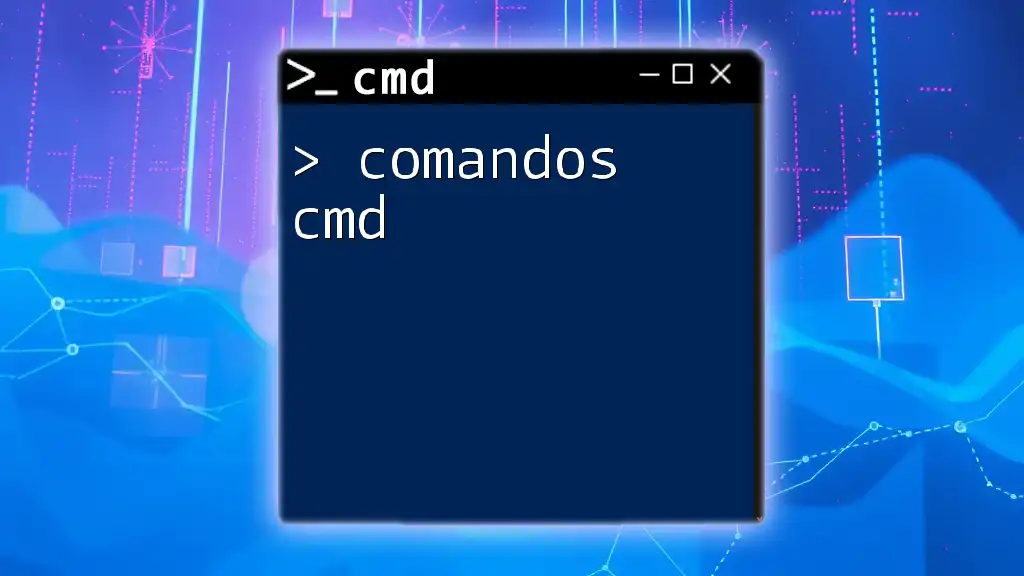
Troubleshooting Common Issues
CMD Not Recognizing Commands
If CMD fails to recognize a command, ensure that you have typed it correctly. If you receive an error message, there could be problems with Windows or the command may not be valid. In such cases, consider:
- Checking your spelling.
- Ensuring you are using the correct syntax for the command.
Further Assistance with Networking
If you find yourself needing more information or encounter problems you cannot resolve, consider checking online resources, community forums, or official documentation from Microsoft. Websites dedicated to tech support can also provide a wealth of knowledge.
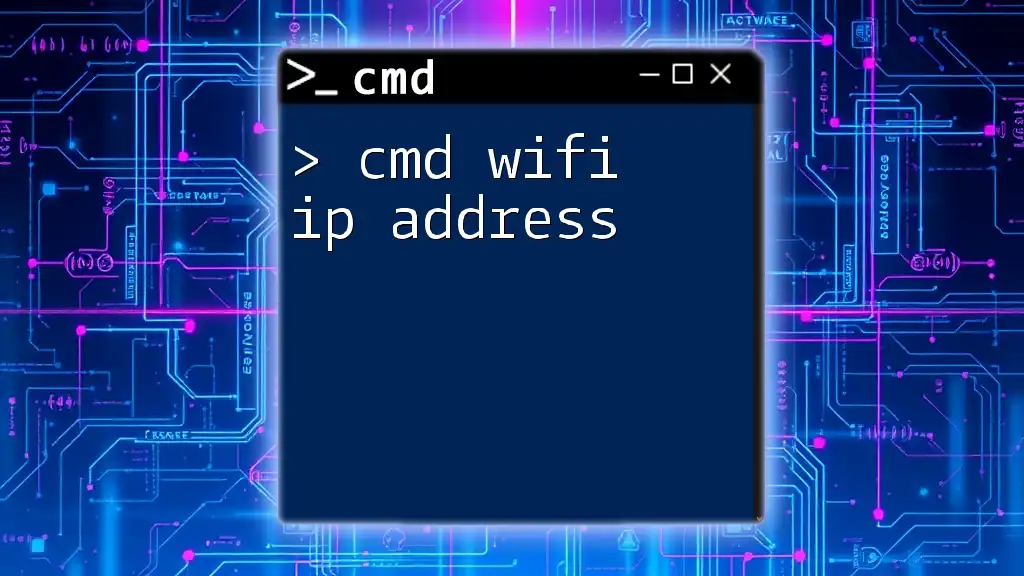
Conclusion
Knowing how to check your IP address using CMD is an invaluable skill in managing your network and troubleshooting connectivity issues. By becoming adept with CMD commands, you empower yourself to handle many networking challenges effectively.
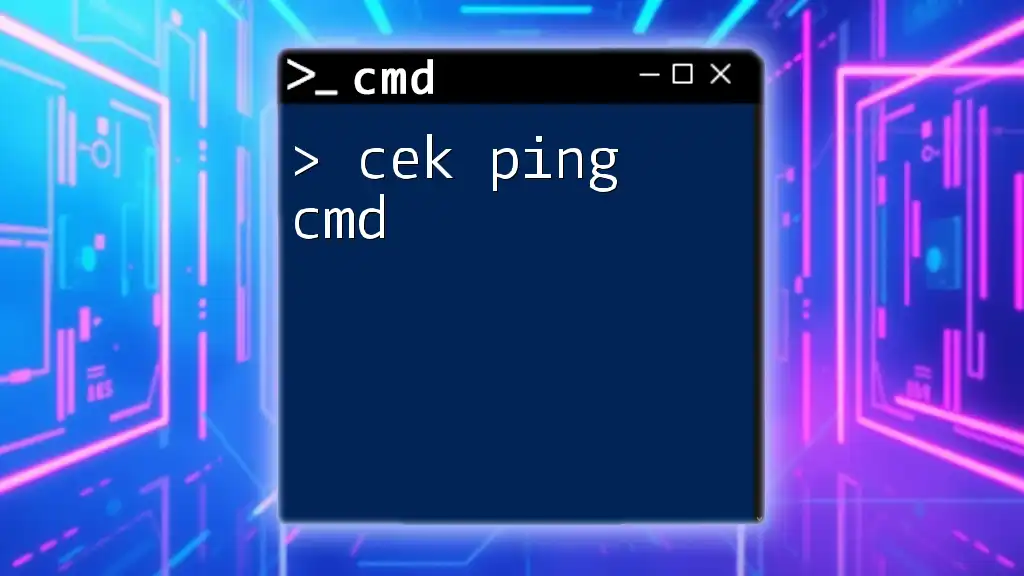
Call to Action
If you found this guide helpful, subscribe for more quick tips on CMD commands. Explore the fascinating world of Command Prompt and enhance your technical skills! Consider diving deeper into networking commands or CMD scripting for even greater mastery.

